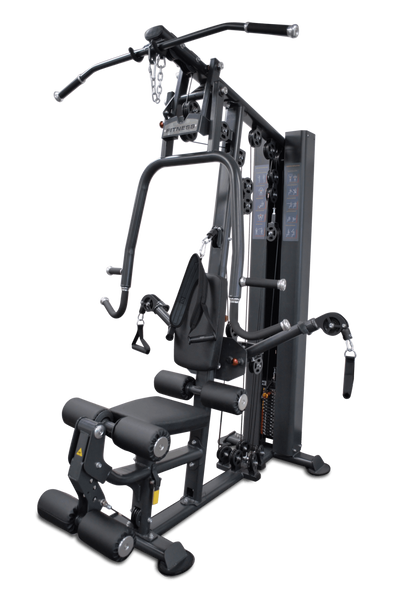Introduction
The modern internet is a battleground for attention. Amidst the millions of websites vying for users’ eyes, web design serves as a critical differentiator. A well-designed website not only captivates but also converts. Businesses understand that the design of their digital presence directly impacts credibility, engagement, and revenue. In this landscape, web designers are pivotal architects.
At its core, a web designer role involves more than making a website “look good.” They merge aesthetics with functionality, creating experiences that resonate with users. Understanding their responsibilities and knowing what to consider when hiring one can significantly influence the success of your project.
Core Responsibilities of a Web Designer
Crafting Visual Elements: Layouts, Color Schemes, and Typography
Web designers are visual storytellers. They arrange layouts to guide users through a website seamlessly, balancing whitespace, imagery, and text. Selecting harmonious color schemes evokes emotions aligned with a brand’s message, while typography enhances readability and reflects personality. These elements work in unison to craft an identity users remember.
Ensuring User-Friendly Navigation and Intuitive Interfaces
Navigation is the backbone of usability. A web designer’s goal is to ensure that users can find information effortlessly. Intuitive interfaces minimize frustration, using clear menu structures, logical pathways, and interactive design principles to create an engaging journey.
Integrating Multimedia Content: Images, Videos, and Graphics
High-quality visuals captivate audiences. Designers embed images, videos, and infographics strategically to complement content and convey messages powerfully. The careful optimization of these assets ensures quick loading times without sacrificing quality.
Implementing Responsive Design for Various Devices
With users accessing websites from an array of devices, responsive design is non-negotiable. Designers craft adaptable layouts that function seamlessly on desktops, tablets, and smartphones, enhancing user satisfaction and boosting search engine rankings.
Collaborating with Developers to Align Design with Functionality
The line between design and development is thin but crucial. Designers work closely with developers to ensure that visual elements are not only appealing but also technically feasible. This collaboration bridges creativity and practicality.
Conducting Usability Testing and Gathering User Feedback
Effective design is iterative. Web designers conduct usability tests to identify pain points, gather real-user feedback, and refine interfaces. This process ensures the final product is both aesthetically pleasing and functionally robust.
Essential Skills and Qualifications to Look For
Proficiency in Design Software: Adobe Creative Suite, Sketch, Figma
Mastery of tools like Photoshop, Illustrator, and Figma equips designers to bring creative visions to life. These platforms enable precise design, prototyping, and collaborative workflows.
Understanding of HTML, CSS, and Basic JavaScript
While developers handle extensive coding, a designer’s grasp of HTML, CSS, and JavaScript ensures that their designs are implementable and realistic.
Knowledge of User Experience (UX) and User Interface (UI) Principles
UX focuses on user satisfaction, while UI deals with aesthetic appeal. Designers who balance both craft interfaces that are attractive and intuitive.
Awareness of Current Web Design Trends and Best Practices
Design trends evolve rapidly. Staying current with innovations like dark mode, micro-interactions, or minimalism ensures that websites remain fresh and competitive.
Strong Communication and Client-Interaction Abilities
The ability to translate client visions into tangible designs is a cornerstone skill. Designers who actively listen and communicate foster trust and achieve better outcomes.
Evaluating a Web Designer’s Portfolio
Assessing Diversity in Design Styles and Projects
A versatile portfolio demonstrates a designer’s adaptability. Look for a range of projects that showcase creativity across different industries and requirements.
Looking for Evidence of Problem-Solving and Creativity
Successful designs address user challenges innovatively. Portfolios highlighting problem-solving techniques signal a designer’s analytical and creative strengths.
Checking for Experience in Relevant Industries or Niches
Industry-specific experience can streamline the design process. Familiarity with niche requirements, whether e-commerce or healthcare, often results in better-aligned outcomes.
Questions to Ask Potential Web Designers
What is Your Design Process and How Do You Approach New Projects?
This question reveals their workflow and problem-solving approach, providing insight into how they handle challenges and communicate progress.
How Do You Stay Updated with the Latest Design Trends and Technologies?
A designer committed to continuous learning brings fresh ideas and solutions, ensuring that your website remains innovative.
Can You Provide References or Testimonials from Previous Clients?
Client feedback sheds light on a designer’s professionalism, reliability, and ability to deliver on promises.
Common Mistakes to Avoid When Hiring
Overlooking the Importance of Cultural Fit and Communication Style
A designer who aligns with your company’s values and communicates effectively ensures a smoother project experience.
Focusing Solely on Cost Without Considering Quality
While budgets are important, prioritizing price over quality often leads to subpar outcomes that require costly revisions.
Neglecting to Define Clear Project Goals and Expectations
Ambiguity breeds confusion. Clear objectives and deliverables from the outset foster alignment and accountability.
Conclusion
A web designer’s impact extends beyond aesthetics—they shape user experiences and influence perceptions. By understanding their responsibilities and making informed hiring decisions, businesses can unlock the potential of exceptional web design to drive success. Choose thoughtfully, and your investment will pay dividends in user engagement and brand credibility.





